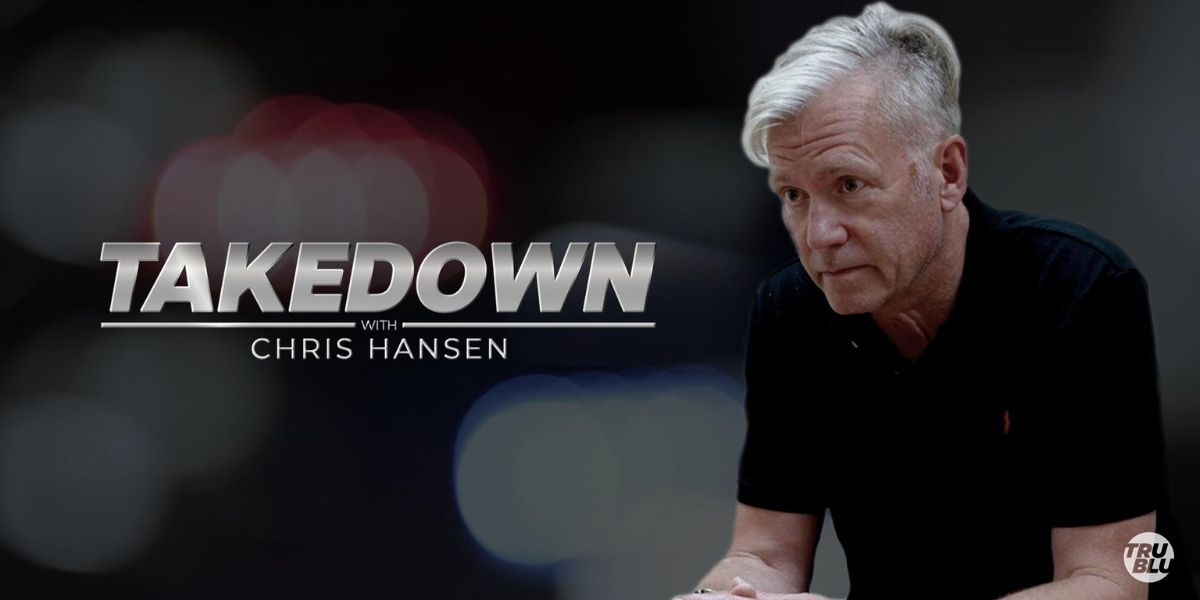To Catch A Predator: A Legacy Of Controversy And Difficult Legacies
To Catch a Predator: A Legacy of Controversy and Difficult Legacies
Associated Articles: To Catch a Predator: A Legacy of Controversy and Difficult Legacies
Introduction
On this auspicious event, we’re delighted to delve into the intriguing matter associated to To Catch a Predator: A Legacy of Controversy and Difficult Legacies. Let’s weave attention-grabbing info and supply contemporary views to the readers.
Desk of Content material
To Catch a Predator: A Legacy of Controversy and Difficult Legacies

Chris Hansen’s stern gaze, the notorious "Why are you right here?" query, and the surprised silence of a would-be baby predator – these are the indelible pictures etched into the collective consciousness due to To Catch a Predator, a controversial and undeniably impactful tv collection that aired on NBC’s Dateline from 2004 to 2007. The present, produced by Dateline NBC in collaboration with the non-profit group Perverted-Justice, utilized sting operations to reveal people who engaged in on-line conversations with minors, believing them to be kids, with the intent of assembly for sexual encounters. Whereas lauded for bringing consciousness to the difficulty of on-line baby sexual exploitation and resulting in quite a few arrests, the present additionally confronted important criticism for its sensationalistic strategy, moral issues, and the potential for miscarriages of justice. This text delves into the complexities of To Catch a Predator, exploring its influence, its flaws, and its lasting legacy.
The premise of the present was comparatively simple. Perverted-Justice, a gaggle of on-line vigilantes, would create pretend profiles of underage kids on numerous chat platforms. They’d have interaction in sexually suggestive conversations with adults who initiated contact, meticulously documenting the interactions. As soon as a suspect expressed an intent to fulfill the "baby" for a sexual encounter, Dateline can be notified, and a sting operation can be launched. The suspect can be lured to a pre-arranged location, usually a seemingly innocuous home, the place a hidden digital camera crew would seize their arrival and subsequent confrontation by Hansen.
The confrontations themselves grew to become the present’s signature moments. Hansen, along with his unflappable demeanor, would confront the suspects, usually eliciting a spread of reactions – from surprised silence and denial to anger and makes an attempt to flee. The present’s enhancing additional amplified the drama, specializing in the suspects’ reactions and the gravity of their alleged crimes. The visceral nature of those confrontations, mixed with the general public shaming side, captivated audiences and propelled the present to important rankings success. The arrests that adopted usually resulted in legal fees, convictions, and prolonged jail sentences. On this sense, To Catch a Predator undeniably achieved its acknowledged objective: it introduced baby predators to justice.
Nonetheless, the present’s strategies and influence have been removed from universally praised. Probably the most important criticism centered on Perverted-Justice’s techniques and the potential for entrapment. Critics argued that the group’s operatives actively inspired and generally even initiated sexually suggestive conversations, pushing people past their preliminary intentions. This raised severe questions on whether or not the suspects have been actually predisposed to commit the crimes or have been as an alternative lured into them by the aggressive techniques of Perverted-Justice. The road between exposing predators and creating them grew to become more and more blurred.
Moreover, the present’s concentrate on sensationalism usually overshadowed the complexities of the authorized course of and the rights of the accused. The edited segments usually lacked context, probably misrepresenting the interactions and the suspects’ intentions. Whereas the present aimed to reveal predators, the dearth of due course of and the potential for misinterpretations raised issues about equity and the potential for wrongful accusations. The general public shaming side, amplified by the present’s reputation, additional sophisticated issues, usually resulting in extreme reputational harm even in instances the place fees have been dropped or dismissed.
The moral implications of To Catch a Predator prolonged past the entrapment debate. The present’s reliance on hidden cameras and the dearth of authorized illustration for the suspects through the confrontations raised severe issues about privateness and due course of. The emotional misery precipitated to the suspects, their households, and even the people posing as kids on-line, additionally grew to become some extent of competition. The present’s creators argued that the potential good thing about apprehending baby predators outweighed these issues, however this argument failed to completely tackle the moral grey areas inherent within the present’s methodology.
The controversial nature of To Catch a Predator in the end led to its demise. In 2007, a sting operation in Texas went awry when a suspect, Louis Conradt, shot himself throughout a confrontation. This incident, coupled with mounting criticism relating to the present’s techniques and moral issues, resulted in NBC’s resolution to cancel the collection. Whereas the present had undeniably led to quite a few arrests and convictions, the Texas incident served as a stark reminder of the potential dangers and unintended penalties related to its methodology.
Regardless of its controversial nature and eventual cancellation, To Catch a Predator left an simple mark on the cultural panorama. It raised public consciousness in regards to the prevalence of on-line baby sexual exploitation and the risks kids face within the digital world. The present’s influence on regulation enforcement was additionally important, resulting in elevated consciousness and assets devoted to investigating on-line baby sexual abuse. Many regulation enforcement companies adopted related methods, although with a larger emphasis on authorized safeguards and due course of.
The legacy of To Catch a Predator is due to this fact a fancy one. Whereas the present’s contribution to the combat in opposition to on-line baby sexual exploitation can’t be denied, its strategies and moral implications stay extremely debated. The present serves as a cautionary story, highlighting the potential pitfalls of vigilante justice and the significance of balancing the pursuit of justice with the safety of particular person rights. Its influence continues to be felt, prompting ongoing discussions in regards to the applicable stability between public security and moral concerns within the combat in opposition to baby sexual abuse, and the function of media in shaping public notion and influencing authorized processes.
The present’s lasting influence additionally extends to the continuing dialog about on-line security and accountable digital citizenship. The vulnerabilities of kids on-line and the necessity for parental steering and schooling stay essential concerns. To Catch a Predator, regardless of its flaws, served as a catalyst for these essential conversations, prompting larger consciousness and proactive measures to guard kids within the digital age. Its legacy, due to this fact, isn’t merely considered one of arrests and convictions, but additionally considered one of prompting very important discussions about on-line security, moral investigative practices, and the advanced relationship between media, justice, and public notion. The questions raised by the present proceed to resonate, reminding us of the necessity for a nuanced and accountable strategy to tackling the pervasive downside of on-line baby sexual exploitation.








Closure
Thus, we hope this text has supplied useful insights into To Catch a Predator: A Legacy of Controversy and Difficult Legacies. We recognize your consideration to our article. See you in our subsequent article!